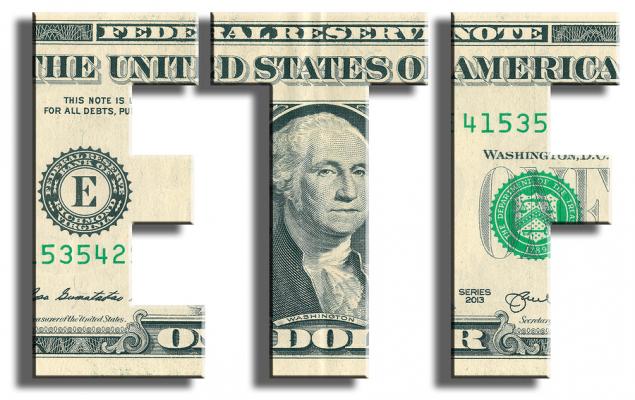Top & Flop Zones Of 2020 And Their ETFs

Image: Bigstock
This has been the banner year for global stocks with most of the indices enjoying a boom. In fact, most of the indices have been on a historic ride buoyed by an unprecedented fiscal and monetary stimulus across the globe. The wide reach of the COVID-19 vaccine is expected to fuel faster-than-expected economic recovery. Further, an additional coronavirus relief package worth $900 billion has bolstered investors’ sentiment in the economy.
However, surging coronavirus cases are weighing on the economy. This has compelled investors’ flight to safety, especially in gold. Silver also got a boost from rebounding industrial and manufacturing demand and will likely to do so given the speculation for a stronger economy.
Given this, we have highlighted the best and worst-performing zones and their ETFs in 2020:
Best Zones
Solar
The solar industry has been on fire primarily driven by President-elect Joe Biden’s push for going greener. Biden plans to pump $2 trillion into green energy over four years to build solar panels, charging stations, and more; vows to rejoin the Paris climate in “exactly 77 days,” and aims for net-zero emissions by 2050.
Invesco Solar ETF (TAN - Free Report) surged 233.5%. It offers global exposure to the solar industry by tracking the MAC Global Solar Energy Index, holding 30 stocks in the basket. U.S. firms dominate the fund’s portfolio with nearly 48% share, followed by China (23.6%) and Spain (7.1%). The product has amassed $3.7 billion in its asset base and trades in a solid volume of around 1.8 million shares a day. It charges investors 69 bps in fees per year and has a Zacks ETF Rank #2 (Buy) with a High risk outlook.
Disruptive Innovation
Innovation has been changing consumer habit and the economy. ARK defines ‘‘disruptive innovation’’ as the introduction of a technologically enabled new product or service that potentially changes the way the world works.
ARK Genomic Revolution Multi-Sector ETF (ARKG - Free Report) has been the biggest beneficiary, climbing 159.3%. It is an actively managed fund seeking long-term capital appreciation by investing in companies that benefit from the development of new products or services, technological improvements, and advancements in scientific research. The fund holds 48 securities in its basket and charges 75 bps in annual fees. The product has gathered $19.1 billion in its asset base and trades in an average daily volume of 3.5 million shares.
Internet
The pandemic has driven the e-commerce boom and changed the consumer landscape into a purely digital one. People have chosen to stay indoors in order to avoid direct contact, which in turn has boosted demand for cloud computing, gaming, e-sports, and streaming services.
While most of the Internet ETFs saw a huge surge, ARK Next Generation Internet ETF (ARKW - Free Report) has skyrocketed 156.6% this year. It is an actively managed fund seeking long-term capital appreciation by investing in companies that benefit from the development of new products or services, technological improvements, and advancements in scientific research. The fund holds 48 securities in its basket and charges 75 bps in annual fees. The product has gathered $19.1 billion in its asset base and trades in volume of 1 million shares.
Worst Zones
Oil
Oil price saw a historic collapse falling into negative territory in April but strongly bounced off from the low level. Though the production cuts by major oil producers as well as vaccine optimism, has led to some strength, COVID-19 infections are still weighing on demand. United States Oil Fund (USO - Free Report) is the most popular ETF in the oil space with an AUM of $3.7 billion and an average daily volume of 5.1 million shares. The fund seeks an average daily percentage change in USO’s net asset value, for any period of 30 successive valuation days, to be within plus/minus 10% of the average daily percentage change in the price of the Benchmark Oil Futures Contract over the same period. It has 0.73% in expense ratio.
Shipping
While the dry bulk shipping rates have shown some strength in recent weeks, it is still at lower levels on shrinking demand across all vessel categories. As such, Breakwave Dry Bulk Shipping ETF (BDRY - Free Report) is down 50.6%. It provides exposure to the dry bulk shipping market through a portfolio of near-dated freight futures contracts on dry bulk indices. The fund has accumulated about $23.9 million in AUM and trades in a small volume of about 48,000 shares per day on average. It charges a higher annual fee of 3.32%.
Inverse Equity
As these ETFs benefit from a bear market, the rebound in market sentiments led to huge losses in this segment. AdvisorShares Dorsey Wright Short ETF (DWSH - Free Report) has shed 49.6% this year. It is an actively managed ETF that short sells U.S. large-cap securities with the highest relative weakness within an investment universe primarily, comprising large-capitalization U.S.-traded equities. It holds 108 stocks in its basket and charges a higher annual fee of 3.67%. The product trades in moderate average daily volume of 138,000 shares and has accumulated $39.9 million in its asset base.
Disclosure: Zacks.com contains statements and statistics that have been obtained from sources believed to be reliable but are not guaranteed as to accuracy or completeness. References to any ...
more


